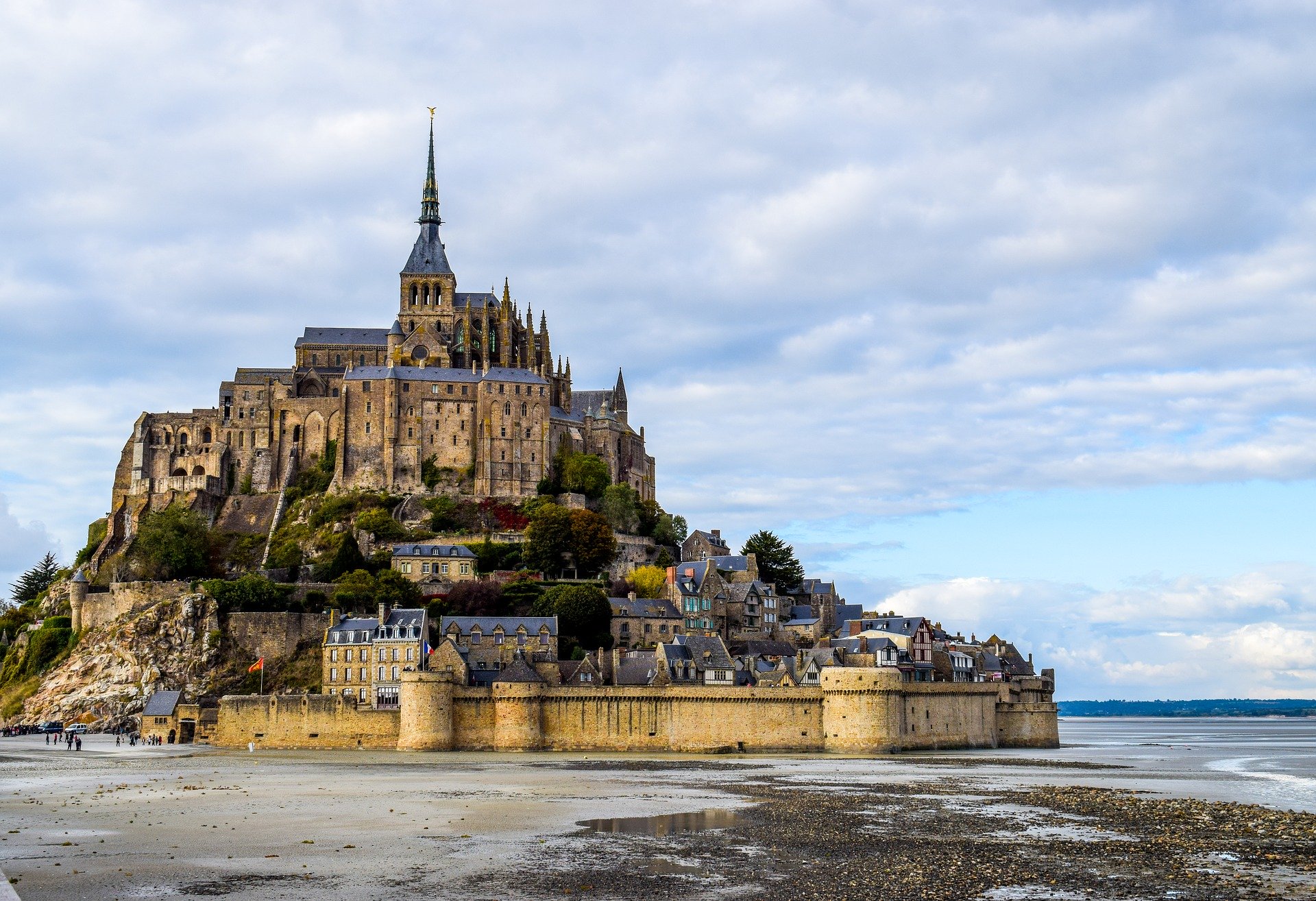
Mont Saint Michel: Wonder of the West
This week we meet again with the story of a French jewel, the Mont-Saint-Michel. Nothing is more striking than the vision of this stone monster enthroned in all its splendour on its rock. Our team is very attached to this monument, which is why we have decided to tell you its history. Birth and architecture […]
This week we meet again with the story of a French jewel, the Mont-Saint-Michel. Nothing is more striking than the vision of this stone monster enthroned in all its splendour on its rock. Our team is very attached to this monument, which is why we have decided to tell you its history.
Birth and architecture
It was in 708 that Bishop Aubert had a sanctuary built on Mont-Tombe in honour of the Archangel Michael. It was not until more than 150 years later that Benedictine monks settled there at the request of Richard I, Duke of Normandy. They built the first pre-Romanesque church there and then, in the 11th century, the Romanesque abbey church was built, based on a series of crypts. Over the centuries, the Mont was modified and enlarged, like Rome, Mont-Saint-Michel was not built in a day! The Hundred Years’ War made the construction of military structures indispensable, which enabled the Mount and a few knights loyal to the King of France to withstand a siege lasting more than 30 years. The thousand-year-old monument offers us a great architectural diversity, a trace of its evolution over the centuries. More than stones, the Mount tells the History of France.
A high place of pilgrimage
The first monks installed by Richard I and under the authority of the abbot, will respect the rules of Saint Benedict (monastic rules established by Benedict of Nursia to guide his disciples in the communal monastic life). Thus the abbey will quickly become a high place of pilgrimage in the Christian West. Thousands of men, women and children would come to the abbey along the roads called the “road to paradise” to seek assurance of eternity from the Archangel. During the Hundred Years’ War, the Mount, deserted by its abbots, lost its splendour, and pilgrims and dignitaries no longer travelled. It was not until 1622 and the reform of the congregation of Saint-Maur (known for its erudism) that new religious settled there. The monks will try to give back its letters of nobility to the Mount so that the pilgrims return. Instead of pilgrims, prisoners will tread the sacred ground of the Mount.
An abbey but also a prison
Following the revolution, the properties of the churches became “national property”, the monks settled on the Mount were driven out of their homes. More than an abbey, the Mont is a fortress, which is why priests who were resistant to the new reforms were locked up there from 1793. The abbey will be transformed into a house of force in 1811 and will welcome political prisoners and common law prisoners, among them, Armand Barbes and Auguste Blanqui. The prison will only close in 1863 but the Mount is in a deplorable state.
Classified as a historical monument
In 1872 the Fine Arts Department appointed the architect Edouard Corroyer to restore the Mont. It was two years later, in 1874, that the monument was classified as a “historic monument of France”. The work was long and tedious, a fire in 1834 weakened the structure and caused enormous damage. The last restoration work was completed more than 100 years later, in 1983 after the “resurrection” of Notre-Dame-Sous-Terre, the chapel located on the site of the first sanctuary. It took a century for the Mount to regain its full splendour. Thanks to the work of architects, workers and enthusiasts, more than 2 million tourists come to admire this wonder of the West.
A sanctuary for books
Until the end of the 12th century, the abbey specialised in the study and copying of manuscripts, taking on the nickname of “city of books”. Historians agree that the monks of Mons made a major contribution to the translation into Latin and the dissemination of ancient Greek texts, particularly those of Aristotle. More than 550 manuscripts will be inventoried, among them 80% will be of a religious nature. It is not surprising in this regard, given that monks devoted their lives to religion, it is logical that their talents should be devoted to it. Alas, the revolution will be at the origin of the destruction of a large part of the manuscripts. 199 manuscripts are preserved in 1850 in the old collections of the library of Avranches. Today you can admire about fifteen of them at the Scriptorial of Avranches! However, the 199 manuscripts can be consulted on the site of the library of Monts. The digitisation of the documents has allowed the greatest number to have access to these priceless manuscripts.
One article cannot summarize the rich history of Mont-Saint-Michel. This monument must be visited, in addition to the beauty of the landscapes which are offered to you from the Monts, each stone, each step tells its fabulous past.

